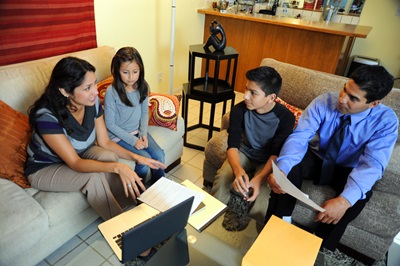Personal and family preparedness

Emergencies can happen anywhere, any time. Make sure you're ready at home, in your car, or at work or school. We are committed to providing you with information, tips, and resources to help you and your family prepare for, respond to, and recover from disasters.
Check out the extensive Emergency Preparedness Guide from the Washington State Emergency Management Division to learn about different hazards and actions you can take to stay safe.
Learn more about what you can do for yourself, your family, kids, and home below or at MakeItThrough.org.
Personal
Take the time to think about your daily activities and unique needs. What can you do now to ensure you are able to respond to emergencies and recover from a disaster that disrupts your normal routine for days or weeks at a time?
Personal preparedness starts with knowing the hazards that threaten your community, and how to lessen their impacts. It also requires you have essential emergency supplies on hand - for your home, workplace, and vehicle. You probably already have most of these items and just need to gather them in a centralized location.
Your emergency kit should include, at a minimum, these items:
- Water
- One gallon per person per day (for drinking, washing, cooking)
- Food
- Non-perishable, ready to eat food
- Items you like to eat
- Monitor expiration dates and replace as needed
- First Aid supplies
- Bandages, antiseptic wipes, gauze pads, scissors, tweezers, and pain-relief medication
- Prescriptions and personal medical equipment
- Electronics
- Light sources that are hand-cranked or battery powered
- Portable radio (a great way to stay informed) and extra batteries
- Alternate means to charge your phone or computer
- Clothing
- At least one extra set of warm clothing
- Rainproof outer clothing and boots to keep you dry
- Comfortable, sturdy shoes in case you need to walk long distances
Don't forget the needs of your pets too!
Family
Disasters can happen when you are not with your loved ones. It is important for your family to discuss how to contact one another, reunite, and respond during different situations.
A good family emergency plan includes:- A home meeting spot
- An out-of-area contact
- Public safety phone numbers for your area (police, fire, EMS, hospital)
- Reunification location, if you can’t make it to your home.
Each family member should keep personal and emergency phone numbers in a safe place, such as in your wallet or emergency kit. They should also know alternative methods for contacting each other if phone lines are down, and for traveling to your reunification location. Deciding these details in advance will help make you calmer during a disaster.
Don't forget the needs of your pets too!
Kids
If your family includes children, involve them in your planning and teach them about potential disasters. Empower your children to take appropriate actions to remain safe during a specific emergency. Teach them who to call when they need help, and where to go if they aren’t able to make it home.
Reduce the likelihood that your children, especially toddlers and infants, will get hurt during an earthquake by securing large furniture, pictures, and other heavy objects that could fall and harm them. At age four, children can start learning safety actions, such as DROP, COVER, and HOLD ON when the ground shakes.
Home
Sometimes disasters can impact your home. Preparing the area where you live helps keep you safe and will minimize damage to your property.
There are several ways you can prepare your home:
- Secure cabinets and wall hangings
- Learn how to turn off utilities
- Secure your water heater
- Secure hazardous materials
- Talk to your insurance provider to learn what hazards are covered under your policy

 Translate
Translate